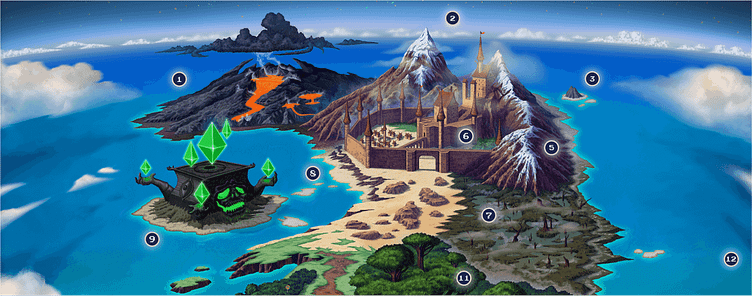An NFT gaming and marketplace.
Kaiju Cards is an NFT game where players can collect character NFTs and then trade them on the NFT marketplace. This game is built on the Solana blockchain. Kaiju Cards needed a game design and an NFT marketplace that would allow players to show and engage. We designed their initial game - Genesis Quest - and built their NFT marketplace.
Our Approach
We partnered with the Kaiju team to gain a strong understanding of the NFT ecosystem they were looking to create. Working backwards, we implemented gaming best practices in conjunction with our expertise in eCommerce and user experience. This allowed us to create a world-class product for both the game and the marketplace.
Key Takeaways
Design System
NFT Marketplace
Genesis Quest
Information Architecture and Journey Flow
User Experience
Design System
Components
For a scalable business like Kaiju Cards, it was critical to create an adaptable design system to align all products across a seamless look and feel. We created a shared library of visual elements tied to the Atomic Design system so that the base elements always informed any extended design components.
NFT Marketplace
Mobile-First Approach
We designed a marketplace for Kaiju Cards for users to buy and sell Kaiju NFT cards. The marketplace is connected to a number of different wallets, so users can buy NFTs to use within Genesis Quest or other Kaiju games.
Filtering
The most critical feature of the marketplace was the need for a complex filtering mechanism. This feature allows users to employ a hyper-specific search for cards.
Buy and Sell Cards
Similar to an auction, the marketplace was designed to allow users to buy and sell their version of a card and make it available for users to purchase at a minimum price.
Genesis Quests
Overview
We were inspired by the early Japanese RPG games and more recent adventure games. We merged elements of each style to create an ownable aesthetic for Genesis Quest. The game is an idle gameplay experience that allows cardholders to participate in an initial distribution of important game assets and tokens. $GEMS is the in-game currency of Kaiju Cards.
Kaiju in Action
A key part of the idle game-play experience is to send the Kaijus on a quest. Users do this by connecting their wallets to the game. Once their assets are available, users have the option to choose the appropriate Kaiju.
Information Architecture and Journey Flow
Understanding Where the User Needs to Go
The first step in our process, after the user research, was to clearly understand the quest journeys in order to account for all key touchpoints. Because Kaijus on a journey could take days to return, it was imperative for us to design a notification system that would inform but not disrupt.
User Experience
Designing a Better User Experience
We analyzed research to prioritize the most critical information for the user. Once discovered, we organized it into a traditional navigation system and placed it on the four corners of the screen. This allowed the essential information to be viewed at a glance.
Our Collaboration
We met weekly with the Kaiju team via Zoom and on their Discord channel. On Discord, we were able to deliver assets to their engineers so they could meet weekly sprint requirements. Our design system allowed us to work quickly and deliver components on a tight-turn timeline.







